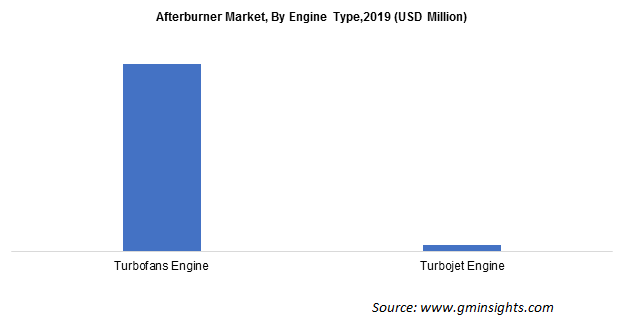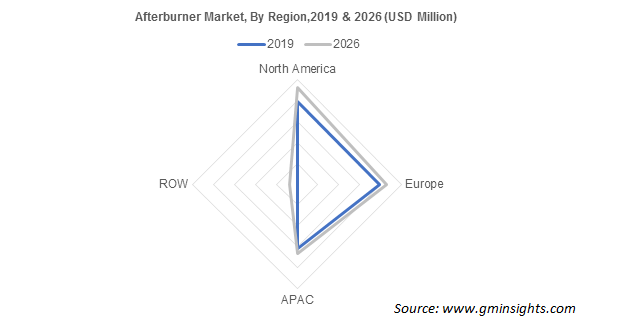Get a free sample of Afterburner Market
Thank you!
Your inquiry has been received. Our team will reach out to you with the required details via email. To ensure that you don't miss their response, kindly remember to check your spam folder as well!
Form submitted successfully!
Error submitting form. Please try again.
Get a free sample of Afterburner Market
Thank you!
Your inquiry has been received. Our team will reach out to you with the required details via email. To ensure that you don't miss their response, kindly remember to check your spam folder as well!
Form submitted successfully!
Error submitting form. Please try again.
Afterburner Market Analysis
The air superiority fighter segment generated around USD 35 million in 2019 owing to increasing fighter aircraft demand in the past few years to ensure aerial supremacy. The air superiority fighter is equipped with advanced stealth coating or materials, information fusion technology, and sensors. The air superiority fighter provides situational awareness, greater survivability, effectiveness for pilots, as well as enhanced readiness at lesser support expenses. Moreover, the increasing development of indigenous 5th generation aircraft by various countries will lead to a greater demand for afterburners.

The turbofans engine type captured around 95% of the afterburner market share. The countries are strengthening military strength to ensure border safety. Switzerland is likely to buy up to 40 fighter aircraft and Finland is planning to buy new fighter aircraft as a replacement for its aging F-18 fleet. The ongoing covid-19 has substantially obstructed the fighter aircraft production in 2020, and with the enforced lockdown, the production and supply of parts have come to a halt, globally.
The aerospace and defense industry observed noteworthy growth in 2019; for instance, in 2019, Lockheed Martin Corporation produced nearly 134 F-35s fighter planes, with 47% increase from 2018 and nearly two times more production compared to 2016, which are likely to drive the turbofans engine and afterburner market.

North America afterburner market led by the U.S. is projected to witness more than 11% CAGR through 2026. The U.S. alone produced above 160 fighter aircraft in 2019 and the U.S. held about one-third of the global fighter aircraft production. Furthermore, the U.S. has witnessed a significant number of orders of its new 5th generation fighter aircraft despite covid-19. In 2020, the Polish defense minister, Mariusz Blaszczak signed a contract with the U.S. government to buy 32 F-35 fighter aircraft, which is scheduled to be delivered by 2024.
The increasing cases of covid-19 has significantly impacted the fighter aircraft production and delay in the supply of engine components as U.S. aircraft manufacturers are heavily dependent on Mexico for fuel systems or sensor-related products, increasing backlog for manufacturers.
The afterburner market is highly consolidated with four key market participants holding majority share in the industry. These players are involved in partnerships with fighter aircraft manufacturers or with the regional government to gain a competitive advantage on rest of the manufacturers. For instance, in June 2019, Pratt & Whitney was awarded a USD 3.2 billion contract to provide 233 fighter aircraft engines with the afterburner for F-35 fighter jets to the U.S. and its allies.
With the increasing demand for 5th generation fighter aircraft, many manufacturers are collaborating with 5th generation aircraft manufacturers to provide their products in the future. For instance, MTU Aero Engines AG has been in contact with Germany and France to develop Next European Fighter Engine (NEFE) to replace multinational Eurofighter engine and Rafale.
How will air superiority fighter planes influence afterburner market trends?
The share of air superiority fighters was valued at nearly USD 35 million in 2019 owing to increased afterburner demand from the growing deployment of fighter aircraft for aerial domination.
What will be the value of global afterburner market share by 2026?
The market for afterburner had reached USD 110.36 million in value during 2019 and will record about 8% CAGR up to 2026 by 2026 with the expanding backlog and production of fighter aircraft.
What factors will augment afterburner demand from turbofans engine segment?
Aircraft with turbofans engine contributed about 95% of global afterburner industry share in 2019 as countries focus on reinforcing their military prowess and border safety.
Why will North America region grow as a leading market for afterburner?
North America afterburner market forecast is impacted by the high production of fighter aircraft in the U.S. and the regional industry will register over 11% CAGR through 2026.